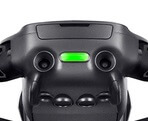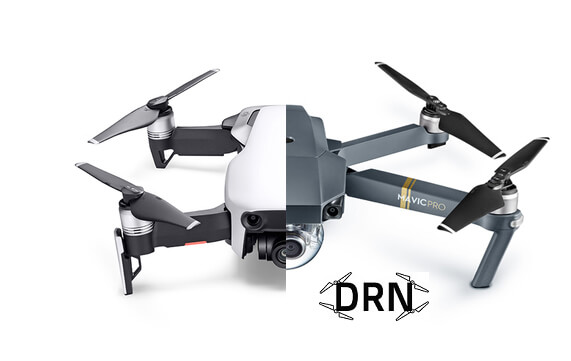Since the all new Mavic Air was released the internet has been debating whether it’s a suitable replacement for people who were consdering a Mavic Pro. The comparisons have talked about battery life, wifi transmission range etc. which are features that are inferior to the existing Mavic Pro.
But there are actually 3 key Mavic Air specs that are better than the Mavic Pro and they are features that really matter to serious drone users. And if you read to the bottom we’ll tell you what that means for the next generation of the Mavic Pro.
Bitrate
In simplest terms, Bitrates are measured in megabits per second (Mbps) and reflect how much image data is being written during a period of time. The higher the bit rate of a video being recorded, the higher the video quality. Higher bit rates produce sharper videos, while lower ones produce blurrier videos because the bit rate controls how much information is in each video.

The Mavic Pro records 4K video at a maximum bitrate of 60 Mbs. Considering the Mavic Pro is technically a ‘1st Generation’ product, it’s specs become a baseline for what products follow.
The new Mavic Air records 4K video at a maximum bitrate of 100 Mbs. To put this in perspective, that’s 66% increase over the Mavic Pro. And it matches the bitrate of DJI’s best consumer drone, the Phantom 4 Pro.
We haven’t heard anyone mentioning bitrate in post-launch reviews of the Mavic Air, but we should. This feature alone is reason to choose the Mavic Air over the Mavic Pro. After all, aerial imaging (video) comes down to highest quality don’t you think?
On-board Storage
When I was explaining the new Mavic Air features to my 18 year old son (a DSLR aficianado) the first thing he said was “wish I had that feature on my Nikon a few times”. I can honestly say that (more than once) I’ve taken my drone out for road trip only to arrive at the destination to find out the microSD card is still in my laptop.
If you’re shooing video in UHD 3840×2160 you’re only going to be able to record 5 or 6 minutes of video, but it’s better than nothing if the alternative is an entirely wasted trip. And if you switch to 1080p you’ll likely have ample storage for what you intended to do….unless you have like 15 batteries.
Given a choice between some onboard storage and no onboard storage, it’s obvious.
Rear Obstacle Avoidance
 One complaint about the existing Mavic Pro is that it lacks rear sensors, which has led to a lot of crashes for pilots trying to manually capture dronies and pull away shots. Yes you can technically do those by flying forward and just reversing the video, but there’s a host of reasons why you wouldn’t….and you shouldn’t have to.
One complaint about the existing Mavic Pro is that it lacks rear sensors, which has led to a lot of crashes for pilots trying to manually capture dronies and pull away shots. Yes you can technically do those by flying forward and just reversing the video, but there’s a host of reasons why you wouldn’t….and you shouldn’t have to.
The rear facing sensors on the Mavic Air take to a new level that like the bitrate above, also leapfrogs it one more step past the Mavic Pro.
What it means for the next generation of Mavic Pro?
We’ve already heard some reliable whispers about the upcoming Mavic Pro II (note that we didn’t call it Mavic 2 or Mavic Pro 2). Development is progressing ahead of schedule, and we expect the Mavic Pro II to be released as early as March 2018 (Mobile World Congress?). Beta testing was completed end of last week.
Seeing the new form-factor that was created with the Mavic Air we’re confident that the Mavic Pro II will look identical in respectively larger size. The new Mavic Pro II will also move to a 3-axis gimbal, however it will once again leave the Mavic Air behind as it moves to an even larger 1″ CMOS sensor…4x the size of the current Mavic sensor.
With the Mavic Pro II improvements will come a very noticeable price gain. Camera quality equalling(or maybe exceeding) the Phantom 4 Pro will put the Mavic Pro II at the top of DJI’s consumer drone pecking order.
The lessons learned engineering the Mavic Air will translate to longer battery life in the new Mavic Pro II, taking it from the current 27 minutes to 30 minutes.





